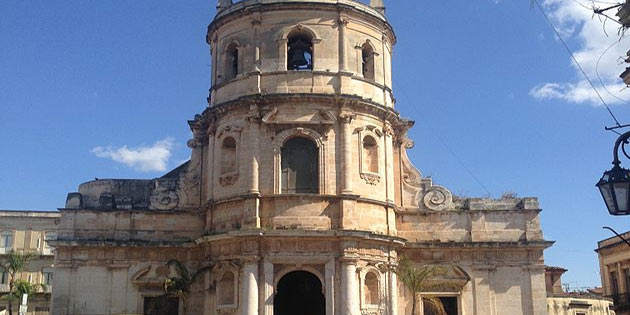Mother Church in Floridia

Davide Mauro - CC4.0
The Mother Church of Floridia, dedicated to San Bartolomeo, is the main religious building of the village.
Its origins are very ancient, it is known that the ancient religious building, originally dedicated to the Madonna della Provvidenza, it already stood in old Xiridia. The earthquake of 1693 destroyed the ancient Mother Church. The reconstruction works began in 1748 at the behest of Duke Ignazio Migliacci. It is believed that the church was dedicated to San Bartolomeo at the behest of the Bonanno family, who contributed to the reconstruction of the church, who, having possessions in Lipari, where the relics of San Bartolomeo were located, decided to introduce the cult of this saint in Floridia.
The façade, in Baroque style, divided into three orders, is characterized by the presence of a cylindrical tower, placed in a central position, convex with respect to the two lateral wings.
On the first order we find the main portal, which opens in the central tower, flanked by two Tuscan-style columns that support the upper entablature with frets carved in bas-relief. On the sides of the portal there are two niches decorated with Baroque style arches. The side portals are both surmounted by broken tympanums. The three entrance doors were created in 2003 by the Paduan sculptor Romeo Sandrin and depict episodes from the Old Testament, in the right door, from the New Testament, in the left door, and episodes from the Life of Mary and the Five Sacraments, in the door central.
On the second order, above the portal, there is a large window flanked by two columns with capitals carved in bas-relief and surmounted by a broken tympanum. On the sides we still find two niches decorated with Baroque style arches. Above the entablature there are two spiral buttresses located on the side of the bell tower.
On the third level is the bell tower composed of three windows divided by two columns. At the crown of the tower there is a mechanical clock and on the sides, two stone obelisks.
The interior, in the shape of a Latin cross, is divided into three naves. Of particular value are the decorations on the vault of the apse.


